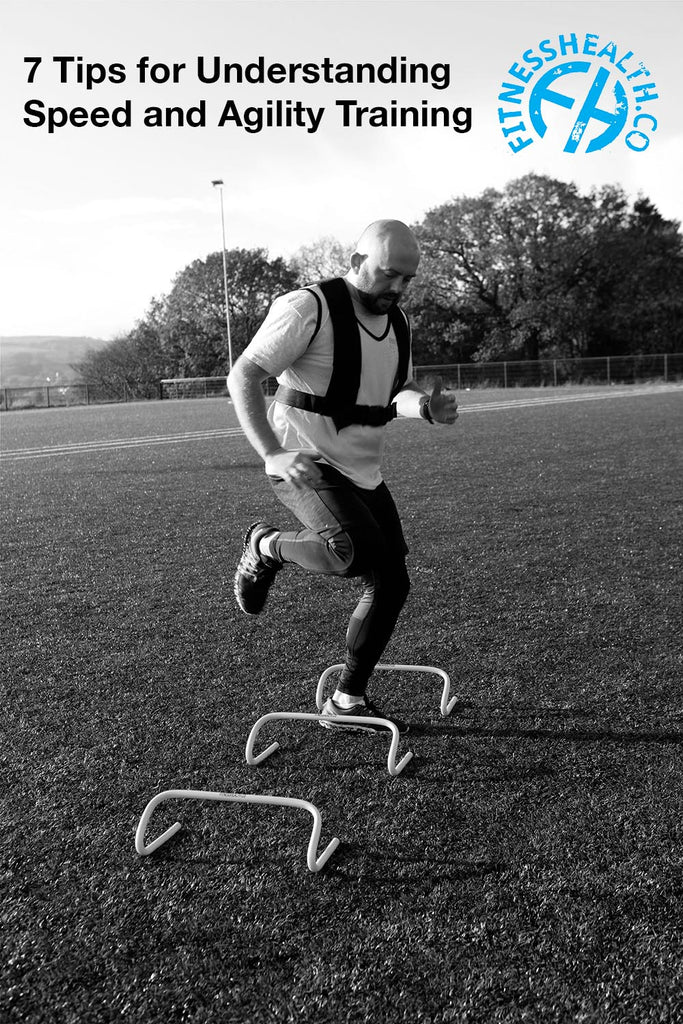
You might have heard about speed and agility training if you’re into fitness. However, it is possible you might not fully understand what it’s all about.
Here are some easy tips for understanding speed and agility training, think of them as small pointers that cover the basics.
- Recognition and Reaction
For speed and agility, an individual should have an absolute threshold of alertness hence allowing him or her to analyse the situation. By doing this analysis, one can move freely yet with speed.
For example, a player fully alert during a football match would be continually "on their toes", ready to move (reaction) and know when and how to take the ball from the competitor team (recognition of a situation).
- Balance and Body Awareness
These two interlinked practices are very important components of speed and agility training. Without proper body balance and without the knowledge of how your body will react, agility training can't happen effectively.
For example, during a run or a marathon, it is very crucial for the runners to bend their knees and body precisely (body awareness) and keep their weight equally divided on both legs thus diminishing the chances of a sprain (balance).
- Change of Direction
This is another important concept found in speed and agility training. It talks about how our body should be ready for rapid and accurate changes in your stance. During hurdle or obstacle races, it is essential for the runners to know and understand the course as they go through it and be acutely ready for any sharp turns or twists they might have to take to avoid falling on a hurdle and losing the race.
- Focus on Mechanics
This concept talks about the importance of allowing athletes to do drills with faulty movement patterns hence, allowing them to get to know and explore their body and physical movements more. This would allow coordination to develop, both in the cognitive and physical sphere hence leading to more agility and speed.
- The Education Involved
This component is a crucial part of speed and agility training, especially for beginners and athletes. By educating through conducting workshops and physical demonstrations, individuals should be educated on the ways of going about this training.
The things includes are, knowing about the best way to begin, what exercises to perform, and other related information. This would allow the involvement of these individuals hence enabling them to understand and more readily accept such a training form.
- Focusing on Quality
This can be achieved through keeping shorter work sessions so those in training can give their full potential and not get tired or hurt themselves. This is a core aspect of speed and agility training because it's believed that the more time spent drilling would lead to more efficiency in this form of training.
However, the focus is not on quantity but on the quality of the training that can be achieved effectively through shorter training sessions. For instance, research in this discipline shows that work periods range from between 2 to 20 seconds whereas rest periods tend to be longer (i.e.) ranging from 20 to 60 seconds or even longer.
This helps to keep the blood flowing in a healthy manner, leading to an increase in the stamina of those in training and also boosting their morale as it is not seen as a form of "punishment" then.
- It’s About Consistency
Consistency refers to conformity in the application of a particular thing. For speed and agility training, consistency plays a key role. According to research, those under training should attend the drilling sessions regularly and if not regularly at least 2 to 3 days per week for near to 20 minutes. They should also keep a healthy and balanced diet.
Furthermore, the focus should be on performing basic acts such as sprinting as it is used in almost all disciplines of speed and agility training. Thus, by being consistent, the body does not get stiff and prevents muscle aches.









